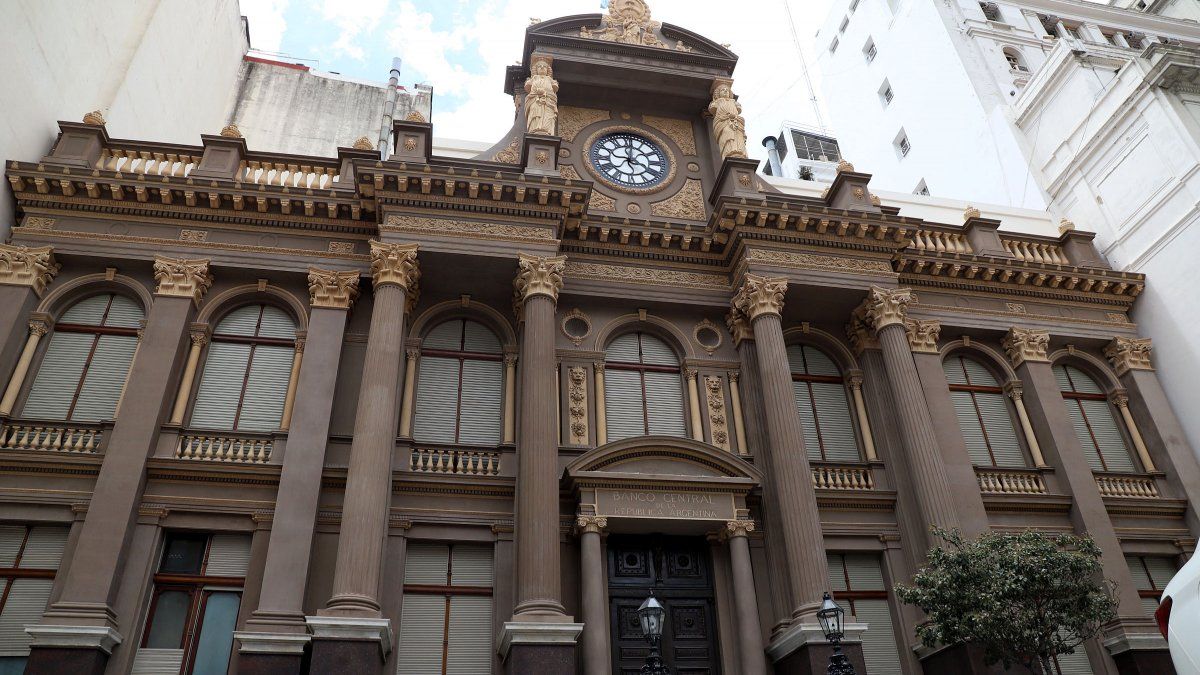In dialogue with Ámbito, analysts maintain that the entity returns to a “weak” situation, after having accumulated US$3.5 billion. The possibility of relaxing restrictions is further away and the gap does not find incentives to stabilize.
The Ministry of Economy confirmed the payment this Tuesday of US$1,550 million in interest to bondholders. It happened in the middle of the negotiation with the International Monetary Fund and an increase in the exchange rate gap, which is close to 50% after having collapsed to 8% after the first devaluation of the Minister of Economy, Luis Caputo. The currency position of the Central Bank (BCRA) remains weak While waiting for settlement and the possibility of releasing the stocks, more lockers are delayed.
The content you want to access is exclusive to subscribers.
The expiration corresponds to the debt external sovereign bond that former Economy Minister Martín Guzmán restructured, with the approval of Congress. The payment caused the drop in gross reserves by US$890 million on Monday, when they closed at US$23,231 million. Gustavo Ber, economist at Estudio Ber, explains this figure in that “around 50% of the holdings would be in the hands of public organizations.”


In exchange for obtaining foreign currency For payment, the Treasury placed Non-Transferable Letters with maturity in 2034 to the BCRA for up to US$3,200 million. For Andrés Reschini, head of F2 Soluciones Financieras, in accounting terms the strategy “does not have much impact, because one asset comes out in dollars and another comes in,” although “currency comes out and a promissory note from the National State comes in.” On the other hand, for the Adcap Grupo Financiero Research team, the use of a Non-Transferable Bill to pay the BCRA “It is not a good sign if what you are looking for is to heal your balance.”. In any case, given the shortage of dollars – negative international reserves of US$8 billion – for Reschini “It leaves the currency position very weak and reduces the chances of easing restrictions in the short term.”
Payment to bondholders, gap and stocks
In turn, the accumulation of more than US$3.5 billion in reserves during the first month of management begins to slow down, following the exchange rate dynamics. “The volume of operations in the MULC and the BCRA purchase volumes in the official market continue to fall,” highlights the analyst. In this context, financial dollars marked a gap of 40% between the official exchange rate and the MEP and close to 50% with the CCL. For Reschini, at the moment this level does not set off the alarm, considering that the last Government maintained a difference of up to 200%.
Likewise, it is an issue to follow closely because it could precipitate the scenario for an upcoming exchange rate correction. So far, for Ber, a devaluation could only arrive between the end of March and April, in search of encouraging the liquidation of the coarse harvest. But the lifting of the stocks “would be left for later” due to the need to strengthen reserves “not only through exports, but also through access to external financing.”
This last point has not yet emerged within the Mileista management. There are no repo loans with banks in sight and the swap with China is on standby, partly conditioned by the management of Diana Mondino, who does not show any gestures of strategic consolidation with the Asian giant.
Since Monday, Caputo has held meetings with the IMF technical delegation, together with the Chief of Staff, Nicolás Posse, and part of the BCRA team, led by Santiago Bausili. The minimum objective is to recondition the agreement so that the organization disburses the US$3.3 billion that should have landed in November.
Meanwhile, for the chief economist of the Sarandí consulting firm, Sergio Chouza, the gap will continue to widen due to “the inconsistency” of the plan itself. For the specialist, the success of the program lies in the agents believing that the Government will be able to maintain the official dollar with a crawling peg of 2%, without new jumps in proportions. “With this inflation it is very difficult,” says Chouza. In a moderate scenario regarding price evolution, he maintains that Milei will arrive in April with an official dollar “more appreciated than the one left by the previous Government.” “There is no rate in pesos, it is not a dollarization period, it does not allow exiting the stocks, it does not guarantee an anchor of expectations, it does not align incentives or reduce distortions,” concludes the economist in his X account.
Source: Ambito




